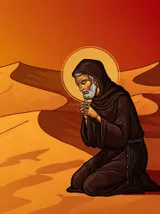Review
What was the great era of transition from the Middle Ages to modern times called?
A) The Gothic period
❌ Try again
B) The Renaissance period
✅ CORRECT!
C) The Baroque period
❌ Try again
Question explanation
The opening paragraph states that "The great era of transition from the Middle Ages to modern times which is called the Renaissance may be divided into the three periods of the Early Renaissance, Full Renaissance, and Late Renaissance."
Who were some of the early Italian painters enlisted by the Church to decorate its buildings?
A) Da Vinci, Michelangelo, and Raphael
❌ Try again
B) Cimabue, Orcagna, and Giotto
✅ CORRECT!
C) Van Eyck, Van der Goes, and Van der Weyden
❌ Try again
Question explanation
The opening paragraph states that "The first years of this period give in Italy the earliest workers known by name in fresco, and in portable pictures, Cimabue, Orcagna, Giotto, and others. In their "frescoed theology", decorating the churches of Assisi, Siena, Pisa and other parts of Italy, is seen the beginning of the long list of painters whom the Church enlisted in her service."
Which of the following is true about the artists of the Renaissance period?
A) They were primarily focused on creating non-religious art
❌ Try again
B) They were not influenced by the Church at all
❌ Try again
C) Many of their works were created for the Church and had religious themes
✅ CORRECT!
Question explanation
The passage repeatedly emphasizes the close relationship between art and the Church during the Renaissance period, stating that "the intimate connexion between art and the Church was just as close as ever" and that "every branch of artistic craftsmanship was at this time employed for the benefit of the Church." It also notes that many Renaissance artists, such as Fra Angelico, Perugino, and Pinturicchio, were "almost exclusively religious painters."




